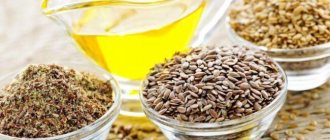Insufficiency of the esophageal cardia is a pathological condition consisting in inadequate closure of the valve that separates the internal space of the gastric region from the esophagus. The main function of this sphincter is to protect the esophagus from the entry of not only gastric juice, but also enzymes that take part in the digestion process. That is why the problem of insufficiency of the lower esophageal sphincter, as well as the upper one, must be approached extremely carefully. Special attention is paid to exercises that help restore its function.
Causes and symptoms of cardia failure
Before understanding the features of treatment, I would like to pay special attention to what are the causes and symptoms of esophageal cardia insufficiency. The main factor is poor nutrition; we should also not forget about drinking carbonated drinks in significant quantities, strong tea, alcoholic beverages and coffee. Other no less significant provoking factors should be considered a passive lifestyle (especially physically), excessive body weight, and other stomach diseases - gastritis, ulcerative lesions. The next reason for the need for exercise in case of insufficiency of the esophageal cardia, experts call increased pressure levels inside the peritoneum.
The symptoms of this pathological condition should be given much more attention, because this list includes constantly recurring heartburn.
Its characteristic feature is its formation regardless of the sessions of eating food. Other symptoms of the disease include:
- a burning sensation behind the sternum and a constant feeling of fullness in the stomach;
- periodic belching of air;
- rumbling and gurgling in the intestinal area;
- painful sensations in the abdominal area that are “vague” in nature. They do not have any clear localization;
- worsening appetite and even apathy.
Additional symptoms indicating that it is necessary to begin treatment are decreased ability to work and general fatigue. The objectives of exercise therapy, the peculiarities of its implementation and breathing exercises deserve special attention.
Main tasks of exercise therapy
Experts call the leading tasks of exercise therapy, first of all, the stabilization of the motor function of not only the stomach, but also the intestines. In addition, this is how the fight against progressive flatulence is ensured. The next task of exercise therapy for achalasia of the esophageal cardia is to increase the contractile abilities of the lower esophageal sphincter. As is known, the legs of the diaphragm directly take part in the formation of the latter, which also need to be trained.
Symptoms of cardiospasm of the esophagus
The next task is to increase the strength and strength of the diaphragm. This is what will allow a person to count on the correct functioning of the esophagus, and therefore the entire digestive system. However, in order to achieve the presented goals, it is strongly recommended not to forget about all the features of the implementation of exercise therapy.
Esophageal dyskinesia
The most common functional disorder is insufficiency of the esophagogastric junction with gastroesophageal reflux . Reflux occurs as a result of pressure differences between the esophagus and stomach. When the patient is in an upright position, it is absent. If in this situation a transition of barium sulfate from the stomach to the esophagus is noticed, then it is not associated with reflux, but with belching, nausea or vomiting, which involves the muscles of the stomach, diaphragm and abdominal wall.
Chalasia syndrome is close to insufficiency of the esophagogastric junction . Chalazia is understood as relaxation of the lower esophageal sphincter with insufficiency of its closing function. The syndrome has been described in newborns and is expressed in massive flow of stomach contents into the esophagus. A similar symptom complex is observed in scleroderma, Raynaud's disease, after cardiodilation and cardiomyotomy. Often, segmental spasm of the esophagus is also recorded.
Hypotension and hypokinesia of the esophagus are manifested in the expansion of its lumen, the slow advancement of the contrast mass, its retention in the esophagus and its incomplete emptying. Barium sulfate also lingers in the pockets of the pharynx - in the pear-shaped sinuses and supraglottic recesses. The air swallowed with barium sulfate remains in the esophagus for a long time, since the walls of the esophagus do not completely collapse (the “glass tube” symptom). The epiphrenic ampulla is not formed, the folds of the mucous membrane are thinned or completely smoothed out. Normal peristaltic waves are replaced by disordered contractions. In its expanded form, the picture of hypotension and hypokinesia is typical for scleroderma. However, similar manifestations occur with hypothyroidism, myasthenia gravis, a number of diseases of the nervous system, as well as with advanced esophagitis.
of hypertension and esophageal spasms are diametrically opposed . The esophagus is straight and not dilated. The folds of the mucous membrane in it are clearly contoured. The advancement of the contrast mass is impaired to one degree or another due to incoordination of esophageal motility, which is expressed in local non-moving non-peristaltic contractions.
The outlines of the esophagus become wavy, as symmetrical or uneven retractions appear on its contours (Fig. 12). They quickly appear and quickly disappear. Secondary contractions lead to a narrowing of the tubular part of the esophagus above the ampulla over several centimeters. The process can reach segmental spasm of the retrocardial segment. To relieve spasms, it is necessary to use sublingual administration of nitroglycerin or subcutaneous administration of atropine. On the contrary, taking a chilled barium suspension intensifies the spasm.
Tertiary contractions of the esophagus look peculiar. They extend to the entire middle and lower parts of the thoracic esophagus. These retractions are unstable and during the same study they appear and disappear. With a large depth of retraction, the accumulations of contrasting mass between them resemble diverticula. The esophagus itself takes on a distinct or corkscrew shape (floor spasm, Barshon-Teschendorff syndrome). This type of dyskinesia is often observed in older people, sometimes without clear clinical symptoms.
Features of exercise therapy
Exercise therapy classes are carried out no earlier than 120-150 minutes after eating. At the beginning of the recovery course, the main positions should be considered to be lying on your back and right side. In this case, an inclined plane with the head end raised by 15-20 cm is used. Speaking about the features of such training, I would like to note that:
- considerable attention is paid to the so-called abdominal breathing;
- the criterion for the correct implementation of all exercises without exception should be considered the absence during training of symptoms such as heartburn or, for example, belching;
- the complex of physical exercises systematically includes such elements as leg movements, turns of the body in the starting position lying on the back;
- Later, the right and left sides, as well as the stomach and knees, are included in the presented exercises. Some exercises can be done while standing.
Noting the features of the exercises, I would like to note that they are carried out starting from the starting position on the knees and exclusively standing. To do this, a person will need to perform extension, bending the body in different directions, as well as turns and squats. At the last stages, when the restorative effect turned out to be significant, the introduction of walking and jogging is acceptable.
For a fairly long period of time, it is not recommended to bend the torso and all those movements that increase the pressure directly under the diaphragm.
The presented rule also applies to training on special simulators. I would like to draw your attention to the fact that after elements that involve isometric muscle tension, their relaxation must be ensured.
According to experts, exercise therapy is most effective for various functional disorders, as well as the so-called sliding hernia in the area of the esophageal opening. In order to achieve success in the treatment process, it is recommended to exercise regularly. Speaking about this, pay attention to the frequency of at least two to three months, namely from one to two times a day. In this case, an obligatory condition is to increase the load. Given the huge variety of exercises and elements, it is advisable to discuss specific algorithms for their implementation with your doctor in advance.
Narrowing or stenosis of the esophagus. Symptoms of obstruction
Lower esophageal (cardiac) sphincter
Lower esophageal sphincter
(lat.
ostium cardiacum
) - sphincter separating the esophagus and stomach.
Other names: cardiac sphincter, gastroesophageal sphincter
. The lower esophageal sphincter (LES) is a valve that, on the one hand, allows food and liquid to pass from the esophagus into the stomach, and, on the other hand, prevents aggressive stomach contents from entering the esophagus.
The one-way movement of food is facilitated by the acute angle of entry of the esophagus into the stomach (angle of His). The sharpness of the angle increases when the stomach is full. Since the pressure inside the stomach is higher than in the esophagus, it is important that when the lower esophageal sphincter opens, gastric contents are not pushed into the esophagus. The valve role is performed by the labial fold of the mucous membrane at the junction of the esophagus with the stomach, contraction of the oblique muscle fibers of the stomach and the diaphragmatic-esophageal ligament. When the stomach is full, the tone of the cardia increases, which prevents the reflux of stomach contents into the esophagus.
| Anatomy of the esophagogastric junction (Gorban V.V. et al.) |
The lower esophageal sphincter is more of a functional rather than an anatomical structure.
Anatomically, the lower esophageal sphincter is considered to be a thickening of the muscular lining of the abdominal part of the esophagus, located within its cardiac constriction and formed by its circular muscle layer and the oblique fibers of the muscular lining of the stomach. When the obturator function of the lower esophageal sphincter is impaired, the aggressive contents of the stomach and duodenum, which enter the mucous membrane of the esophagus and other organs, can cause gastroesophageal reflux disease (GERD) and other diseases, including asthma and laryngitis.
One of the types of disorders of the obturator function of the LES are the so-called transient relaxations or spontaneous relaxations (PRNS) - episodes of spontaneous, not associated with food intake, decrease in pressure in the LES to the level of pressure in the stomach lasting more than 10 seconds.
To study the functional state of the lower esophageal sphincter, daily and short-term pH measurements, esophageal manometry and other studies are used.
Manometric indicators of the lower esophageal sphincter
According to O.A. Storovoy and A.S. Trukhmanov, in adults, the lower esophageal sphincter is normally characterized by the following numbers:
- resting pressure of the lower esophageal sphincter - the state of tone of the lower esophageal sphincter at rest outside the pharynx - 10-25 mm Hg. Art.
- duration of relaxation of the lower esophageal sphincter - the time during which there is a drop in the tone of the lower esophageal sphincter before it rises to the previous level (or higher) - 5-9 s
- relaxation of the lower esophageal sphincter (% of relaxations) - normally, complete relaxation of the lower esophageal sphincter occurs to the basal line of gastric pressure in 90% of cases; calculated by the formula:
% relaxation = (resting pressure in the lower esophageal sphincter - residual pressure) / (resting pressure in the lower esophageal sphincter) ×
100 %
- residual pressure - the difference between the lowest pressure achieved during the relaxation process and the basic pressure in the stomach (actually the esophageal-gastric pressure gradient) - no more than 8 mm Hg. Art.
- the location of the lower esophageal sphincter is 43-48 cm from the wing of the nose. May become displaced during deep breathing, for example in patients with a hiatal hernia.
Factors influencing the tone of the lower esophageal sphincter
The following factors increase or decrease the pressure of the lower esophageal sphincter (O.B. Dronova et al.):
| Factors | Increases LES pressure | Reduces LES pressure |
| Hormones | gastrin, motilin, substance P, histamine | vasoactive intestinal polypeptide, glucagon, progesterone, secretin, somatostatin, cholecystokinin |
| Food | meat products | fats, chocolate, citrus fruits, pepper, mint, tea, coffee, alcohol |
| Medicines and other factors | metoclopramide, domperidone, cisapride, α-adrenergic agonists, β-adrenergic agonists, prostaglandins, cholinomimetics | α-adrenolytics, β-adrenergic agonists, barbiturates, calcium channel blockers, dopamine, morphine, nitrates, serotonin, theophylline, tranquilizers, anticholinergics, smoking, pregnancy |
In the work of Maev I.V. and others provide data on the effect of various foods and drinks on the tone of the lower esophageal sphincter:
| Product | Effect | Maximum pressure change (mmHg) | Effect duration (min) |
| Protein | Increases | +8 | 20-30 |
| Fat | Reduces | -8 | 5-10 |
| Chocolate | Reduces | -10 | 5-10 |
| Caffeine | Reduces | -5 | 30 |
| Alcohol | Reduces | -8 | not documented |
| Peppermint | Reduces | not documented | 5 |
Patient Materials
The GastroScan.ru website contains materials for patients on various aspects of gastroenterology:
- “Advice from doctors” in the “Patients” section of the site
- “Popular gastroenterology” in the “Literature” section
- “Popular gastroenterology” in the “Video” section
Resources for Healthcare Professionals
Determination of the upper border of the lower esophageal sphincter using the “impedance jump” method
When positioning a pH probe in a patient's esophagus, a method is used to determine the location of the lower esophageal sphincter by the "pH jump". There are foreign studies according to which, when determining the location of the LES using pH imedancemetry, a good result and more accurate than using the “pH jump” is obtained by the “impedance jump” method (Mauro A., et al). The “impedance jump” method is also implemented in the IAM-01 impedance acid monitor, trade name “Gastroscan-IAM”. Its use makes it possible to exclude esophageal manometry or installation of a probe for pH impedansometry (ZpH probe) under X-ray from the pH-impedance measurement procedure and obtain better positioning accuracy of the ZpH probe than the “pH jump” method (Kazakov A.V. et al.) .
Video
Still from video Stremoukhov A.A. Diseases of the esophagus. Gastroesophageal reflux disease
On the website GastroScan.ru in the “Video” section there is a subsection “For Doctors”, containing video recordings of reports, lectures, webinars in various areas of gastroenterology for healthcare professionals.
Back to section
Briefly about massage
In order to combat not only flatulence, but also constipation, self-massage is strongly recommended. Speaking of this, pay attention to the massage of the abdominal area, which is carried out using a hockey or tennis ball. Also useful is massage of the lumbosacral region and peritoneum, leisurely walking and swimming (at a slow pace, for pleasure).
Other useful elements include riding a bicycle with an upright body position, as well as all kinds of minimally traumatic games. In this case, it is advisable to avoid bending the body forward. In order to exclude cardiospasm of the esophagus, one should not forget about the benefits of all kinds of respiratory elements.
Breathing exercises
The situation is more difficult with the esophagus; stimulating it requires great effort. But regular breathing exercises can help a little. General recommendations include the following points:
- All elements can be carried out exclusively on an empty stomach, at least because active exercises on a “full” stomach will inevitably lead to aggravation of the condition of the lower esophageal sphincter;
- practically the only organ in the sternum that can be controlled is the lungs;
- in this regard, it is advisable to begin familiar and completely natural respiratory movements. For example, alternately inhale and exhale;
- There is one minor feature - the elements are carried out not only by thoracic, but also by peritoneal breathing. When we talk about this, we mean a process in which, within the framework of inhalation and exhalation, not only the chest, but also the shoulders rise or fall.
In addition, in the latter process, the participation of the abdominal muscles is a mandatory element. Only in this way will it be possible to achieve a significant increase in the tone of the sphincter of the esophageal opening of the diaphragm. A variety of internal organs take part in the training process, namely the digestive and cardiovascular systems, respiratory sections and nearby muscles and blood vessels.
What is esophageal atresia in newborns?
It is strongly recommended to inhale and exhale at different speeds, namely quickly and then slowly, after which again very slowly and then systematically accelerating.
In the final stages of deterioration of the general condition of the sphincter, exercises will not be effective. While at the initial stages of loss of the ability for optimal contractions in the region of the esophageal cardia, it is through breathing exercises that everything can be restored.
It will be more than enough to perform similar active respiratory movements every day, namely for 10-15 minutes. Experts recommend not to be lazy and perform at least two to three approaches three times a day - this is the minimum amount. It is desirable that there are about five such repetitions during the day. This will also help get rid of such an urgent problem as achalasia of the esophagus. In order to consolidate the effect obtained, it is recommended to additionally resort to physical therapy.
How to live with gastroesophageal reflux disease?
Class Clinic
Gastroesophageal reflux disease (GERD) is a common chronic disease in which the contents of the stomach or duodenum flow into the esophagus, causing damage to lining cells. This disease leaves a certain imprint on the life of the person who suffers from it, because in order to effectively stop exacerbations of the disease, you need to follow certain rules of nutrition and behavior, undergo regular examinations and treatment measures. Arabova Robiya Damirovna, a practicing gastroenterologist at the Kaliningrad medical center Class Clinic, spoke about how to live with GERD.
Tell us, what difficulties do people suffering from GERD experience?
Normally, in humans, the esophagus is separated from the stomach by circular muscles (sphincter), which during digestion prevent the contents of the stomach from entering the esophagus. With GERD, this muscle does not perform its function properly, the sphincter is open or not completely closed. Accordingly, the aggressive contents of the stomach or duodenum with hydrochloric acid, food, etc. enter the esophagus, where there is a completely different environment, and have a damaging effect on its mucosa. This is manifested by constant heartburn, a burning sensation, belching, and chest pain may appear. The pain can radiate (give) to the jaw, under the shoulder blade, and pain attacks can be accompanied by nausea and vomiting. All these symptoms usually occur after eating or at night.
This disease is caused by such reasons as stress, disturbances in nervous regulation, disturbances in diet, abundant food, abuse of spicy and hot foods, heredity, excess weight, and pregnancy. Single reflux of stomach contents into the esophagus can occur normally. For example, when a person has eaten heavily, while drinking alcohol, smoking, after and during meals. If symptoms such as heartburn and belching are observed sporadically and rarely, most likely, we are not talking about a disease. If these signs occur frequently and constantly (2 or more times a week), you should immediately consult a specialist. One of the accurate methods for confirming this disease is FEGDS (gastroscopy).
One of the most dangerous complications of GERD is Barrett's syndrome or Barrett's esophagus - this is a serious disease that occurs as a result of long-term regular exposure of the esophagus to acidic gastric juice. As a result, a change in the cells of the mucous membrane of the esophagus develops, which is a precancerous condition. Erosion of the esophagus can also occur, which scars, causing over time a narrowing of the lumen of the esophagus (scar stricture of the esophagus). GERD may be accompanied by anemia due to constant injury and erosion of the esophageal mucosa.
What rules can prevent exacerbations of GERD?
The choice of specific measures depends on the degree of damage to the esophagus.
For any form of the disease, it is necessary to take antacids (drugs that protect the mucous membrane from the aggressive effects of hydrochloric acid), drugs that neutralize the effect of acid, as well as prokinetics - drugs that help restore normal functioning of the sphincter.
An important element is proper nutrition:
- Excluding cold, hot and spicy foods from the diet.
- Carbonated drinks are strictly prohibited.
- Avoid rough foods; foods should be thoroughly chewed or specially processed (food should be finely chopped, turned into puree, porridge).
- Limiting any fatty foods and fast foods (all foods high in fat lead to sphincter relaxation and contribute to the development of the disease).
- Exclusion of canned food, smoked and fried fish, legumes, sour vegetables and fruits, citrus fruits (the latter increase the secretion of hydrochloric acid in the stomach)
- Limiting the amount of sweets and chocolate, coffee is also prohibited during an exacerbation.
- Limit consumption of tomato products.
What diet do you recommend for patients suffering from GERD?
It is important for a person with this disease to remember that he should eat little and often. Every 2-3 hours, in small portions. The key point is that there should be little food in the stomach, which will prevent excess hydrochloric acid, which means it will alleviate the condition and prevent damage to the mucous membrane. After eating, you should not take a horizontal position (lying down). The last meal for a person suffering from GERD should be completed at 19:00-20:00 (2-3 hours before bedtime). Increase the proportion of plant proteins and complex carbohydrates (rice, bread, pasta) in your diet.
What in your lifestyle can trigger exacerbations of GERD, what habits should you give up?
It is necessary to completely give up alcohol and smoking, and get rid of excess weight. Avoid consuming peppermint essential oils, which may be found in chewing gum, toothpaste and a number of other hygiene and cosmetic products, as they relax the esophageal sphincter. You should also avoid any activities that require you to bend over frequently and for long periods of time.
It is especially dangerous to do anything or perform work in an inclined position after eating. It is worth refusing to wear tight waist belts and, if possible, eliminating any pressure on the abdominal cavity. If you have GERD, weight lifting and strength sports, which increase the load on the abdominal muscles, are contraindicated (bodybuilding, weightlifting, and martial arts are especially dangerous). And one more important point - during sleep, the head of the bed should be in a raised position (15-20 cm).
Make an appointment with Robiya Damirovna Arabova on the website or by phone (4012) 33-44-55.





